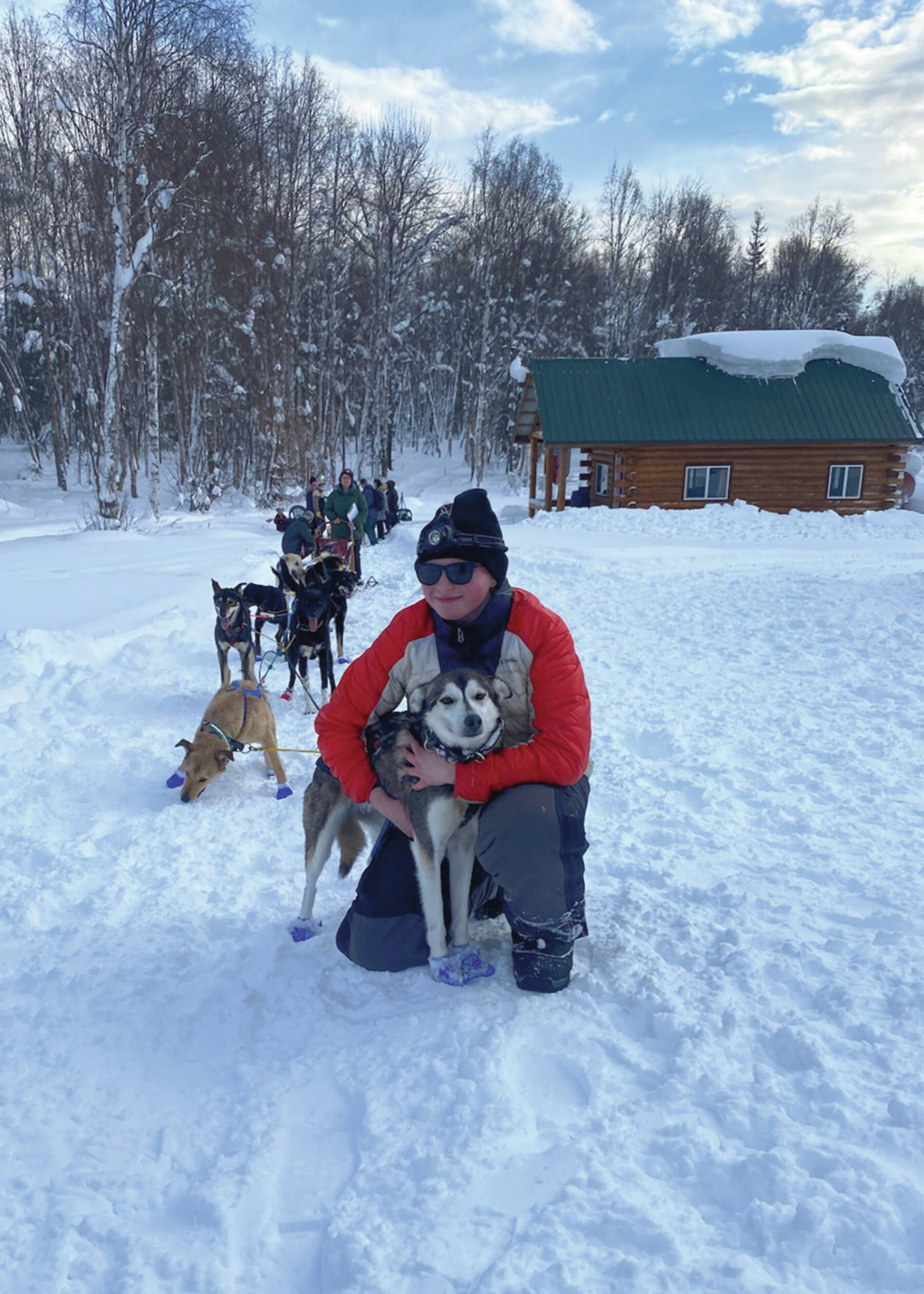A Homer ninth grader is one of 21 entrants in this year’s Jr. Iditarod, and the only one from south of Anchorage, according to the race roster as of Monday.
Connections Homeschool student Addy Pederson, 14, is participating for the first time in the race, slated for Feb. 24.
Pederson, in an interview with Homer News, said she started running with her parents’ dogs when she was younger and started purchasing some of her own racing line dogs when she was 12 years old.
Pederson owns six race dogs: Star, Honey, Taco, Pretty, Lobo and Arlo. She will borrow four more to complete her 10-dog team for the upcoming race.
Addy competed Feb. 9 in the Willow Jr. 100 race, also a two-day event. Pederson placed eighth in the race with a total of 11 mushers. Prior to that, in December, she also competed in the Knik 100 race, which follows some of the same trail as the Jr. Iditarod.
Part of the Jr. Iditarod also follows the same trail as the adult race. “When I ran in the Knik race, I saw a big sign on the trail that says ‘Nome, 149 miles’ with an arrow on it,” Pederson said.
This year’s Jr. Iditarod will be the 47th running of the event, which started in 1977. The race begins at Knik Lake, northeast of Anchorage. According to the race website, mushers will travel from the start through Eagle Quest and continue to the halfway point at Yentna Station Roadhouse, where they will take a mandatory 10-hour layover. They will return the next day along the same route to the finish line on Knik Lake. Junior mushers are qualified to race if they are between the ages of 14 to 17 the day the race begins. Additional regulations related to mandatory dog, gear, food and trail rules can be found on the Jr. Iditarod website at https://www.jriditarod.org/home. The race course is approximately 150 miles.
Other than the mandatory layover, Pederson said on the run she’ll probably stop a few times to snack the dogs but just for a few minutes. All the other dog food and bedding is shipped out to the layover in drop bags. Typically it’s warm enough for the dogs to stay outside with out coats, but she’ll have those available for the overnight also.
“They have to fly all the drop bags out so we had to have those ready and sent out last weekend,” Pederson said.
In the sled, Pederson will be carrying a heat can cooker to melt snow for water for the dogs. “I’ll also bring about 10 pounds of beef and kibble and add water to that, so that’s how the dogs get most of their hydration. If it’s really cold out most of the dogs don’t drink water.”
Pederson said most of her dogs are pretty young and don’t really get too tired by the end of a two-day race. “They can usually stay pretty high energy and a 10-hour layover is plenty for them,” she said.
To train in the Homer area, Pederson typically runs the dogs out toward Caribou Lake, slightly northwest of Homer. Trying to find trails with enough snow is one of the biggest challenges of mushing in the Homer area. “I’m running about six or seven dogs in training and some of the hills out there are pretty tough for such a small team, especially if we’re breaking trail. I’m trying to talk my parents into letting me get a few more dogs so I have enough for a bigger team,” she said. The cost of a sled dog is approximately $1,000.
One other Alaska musher who currently lives in Homer is Libby Riddles, winner of the 1985 Iditarod, which is celebrated as a moment in the Alaska Sports Hall of Fame.
Now in the 52nd running, the Iditarod for senior mushers will start on March 2 in Anchorage.
Grace Ridge Brewery in Homer will hold a “meet the musher” event on Friday at 5:30 p.m. Pederson will be there to give a presentation on training sled dogs starting at 6 p.m.


